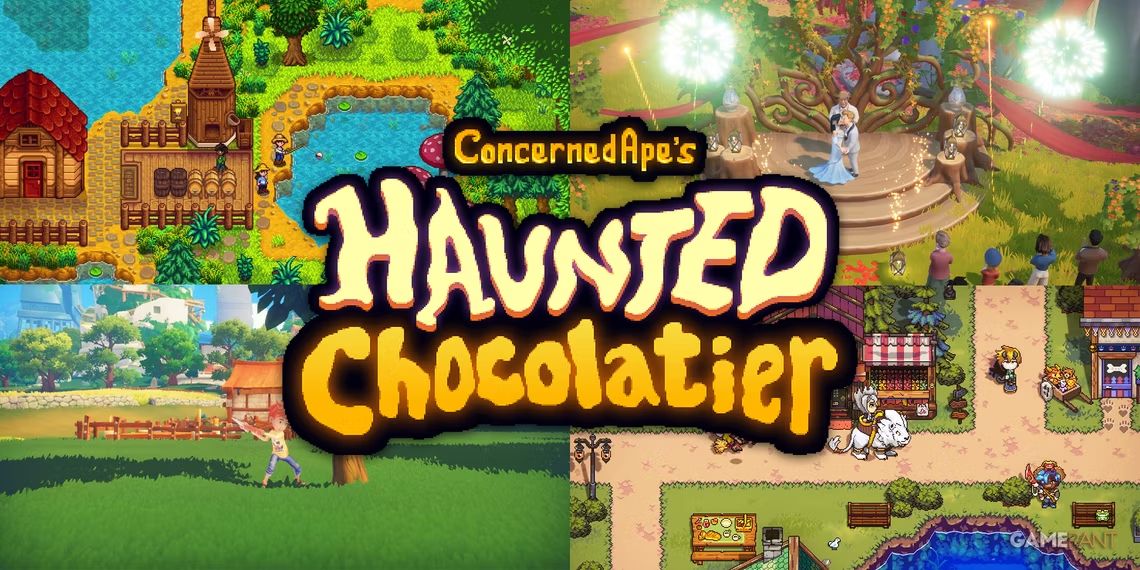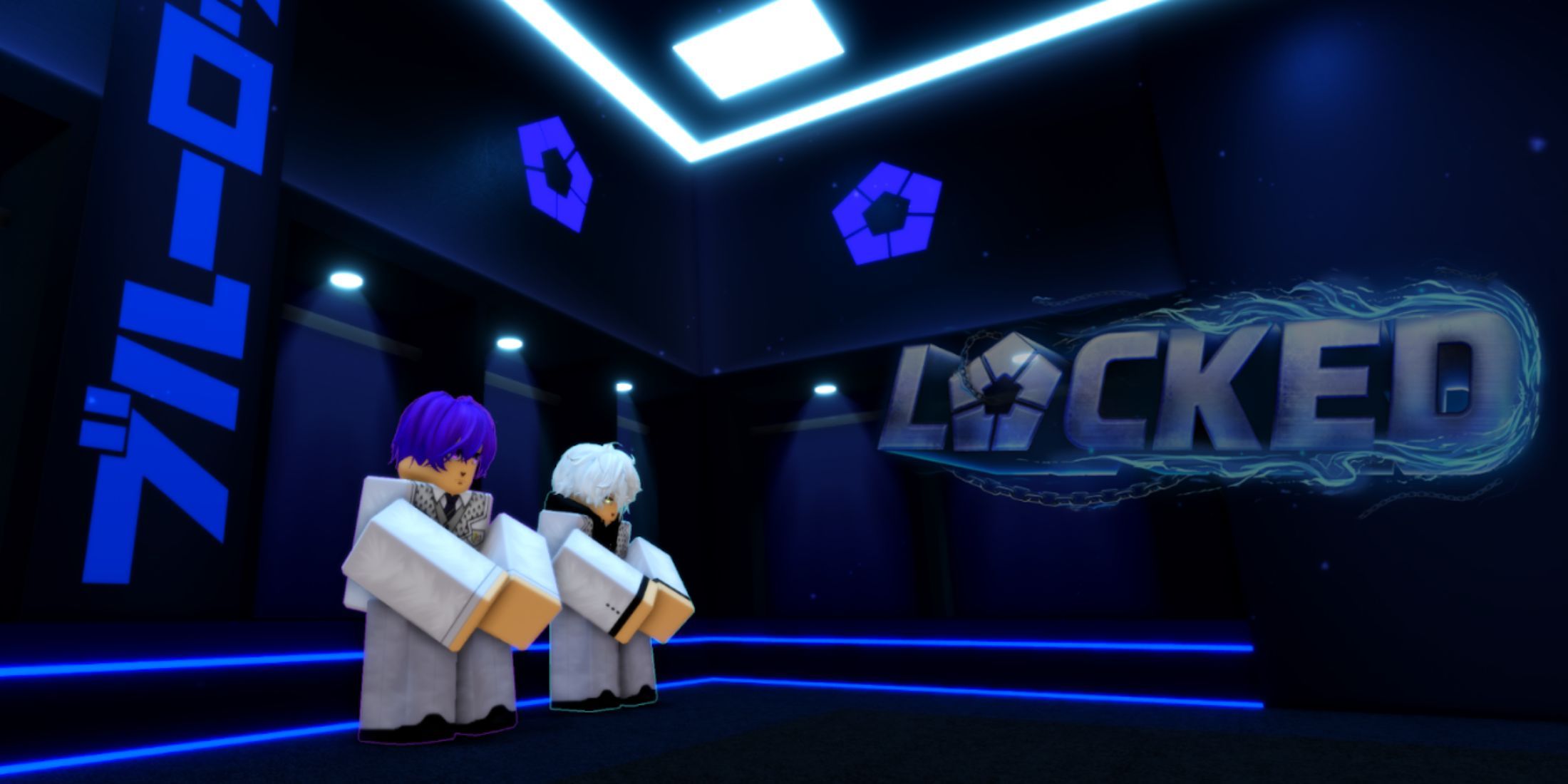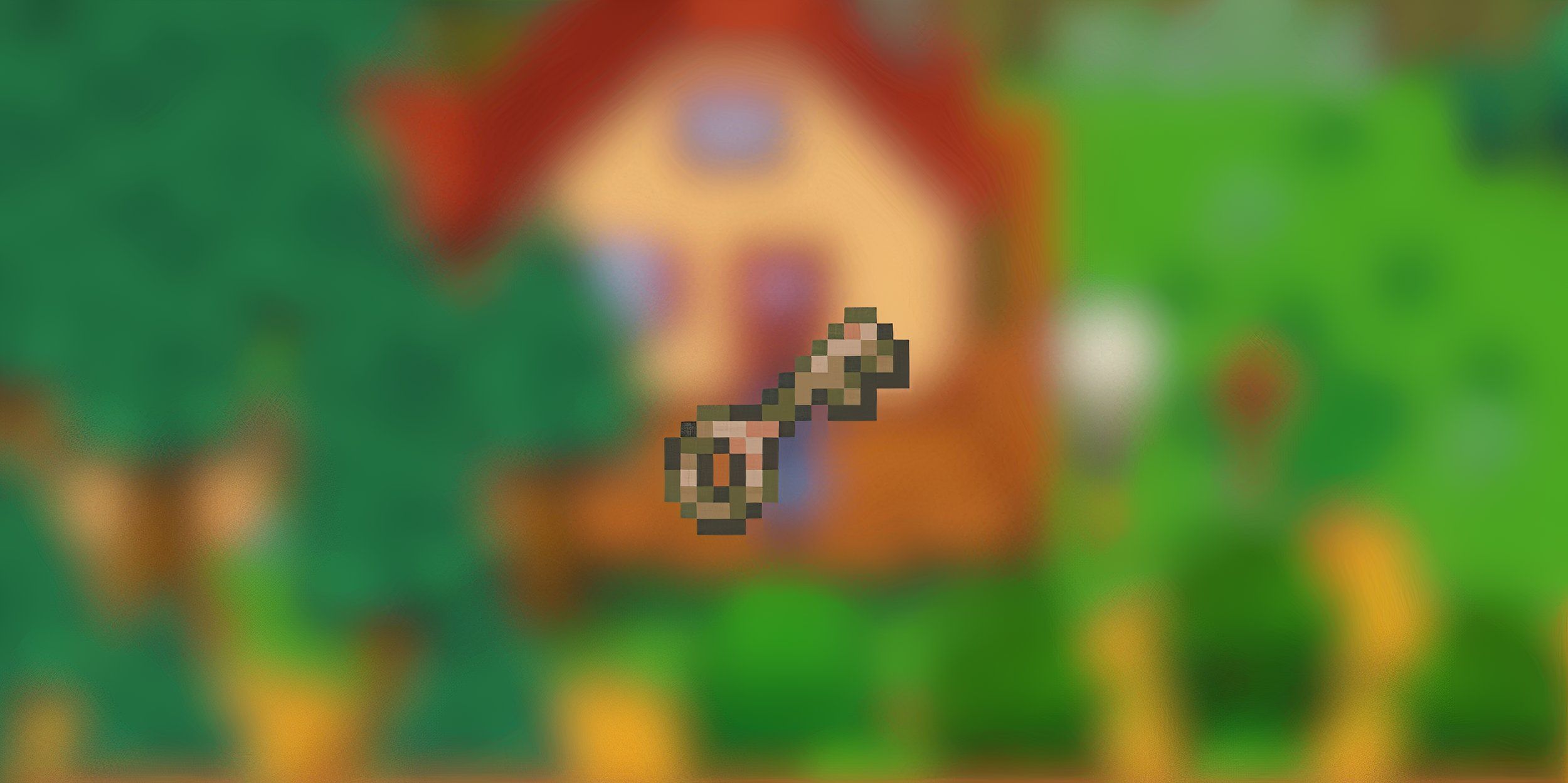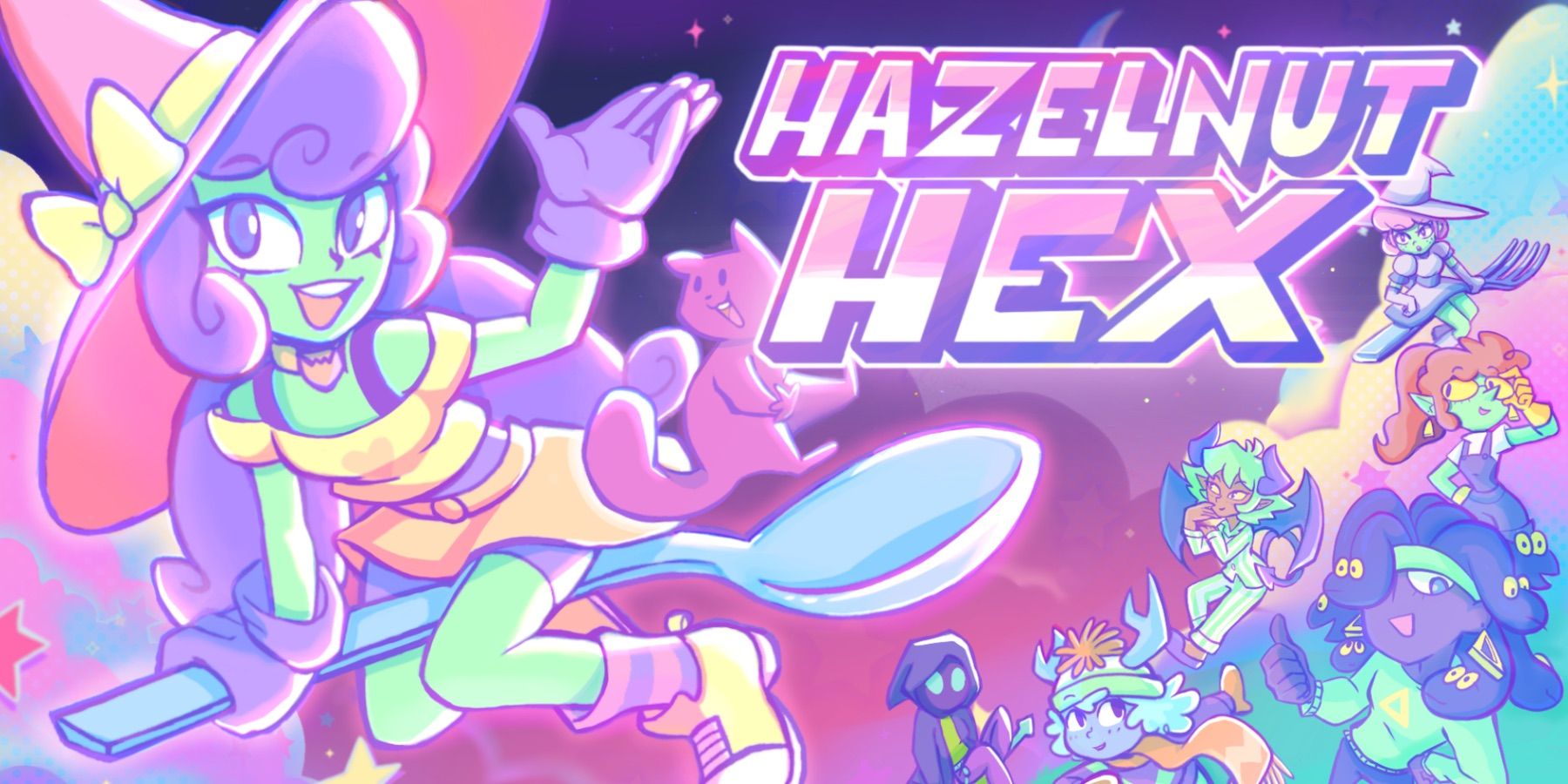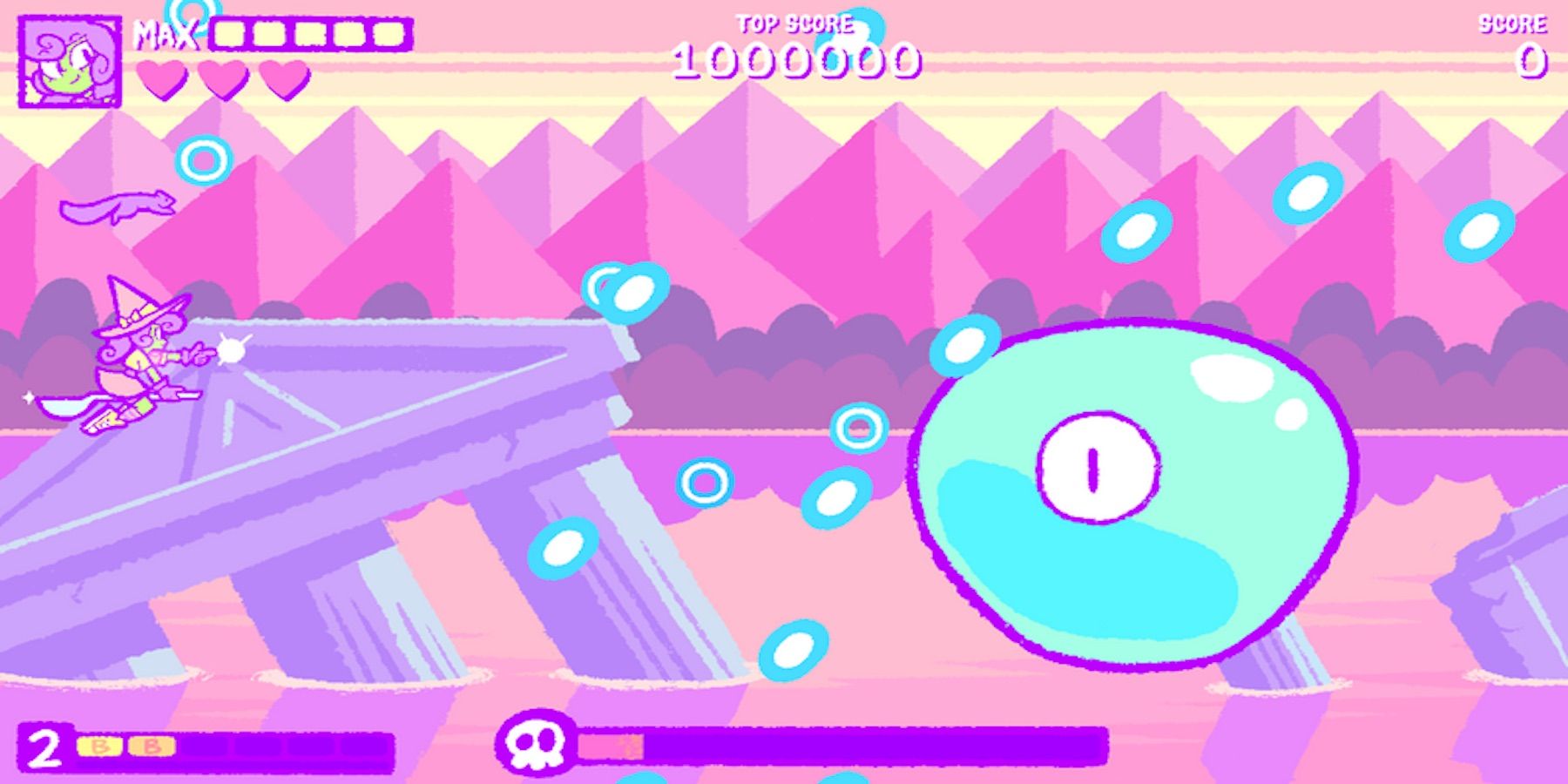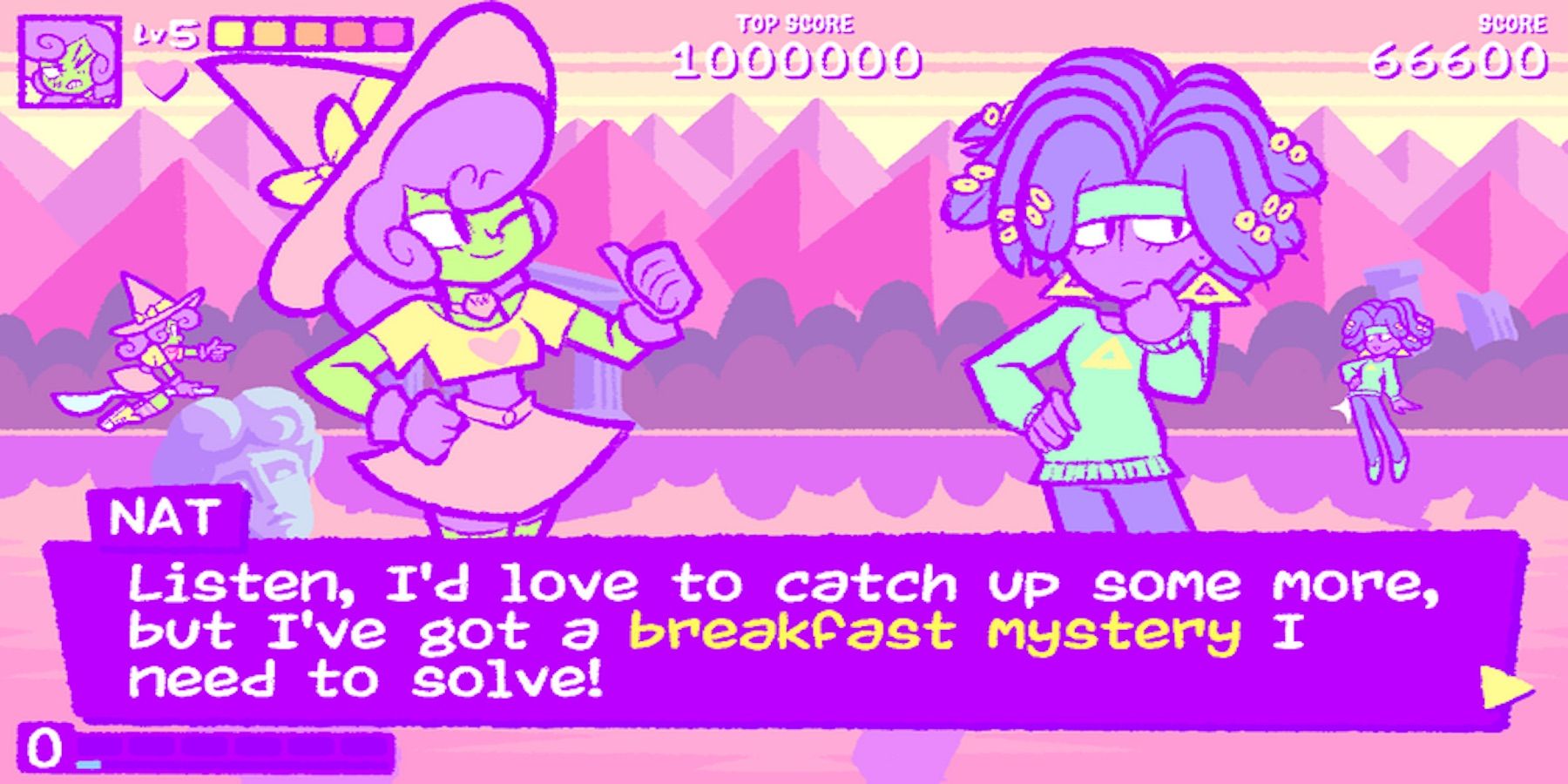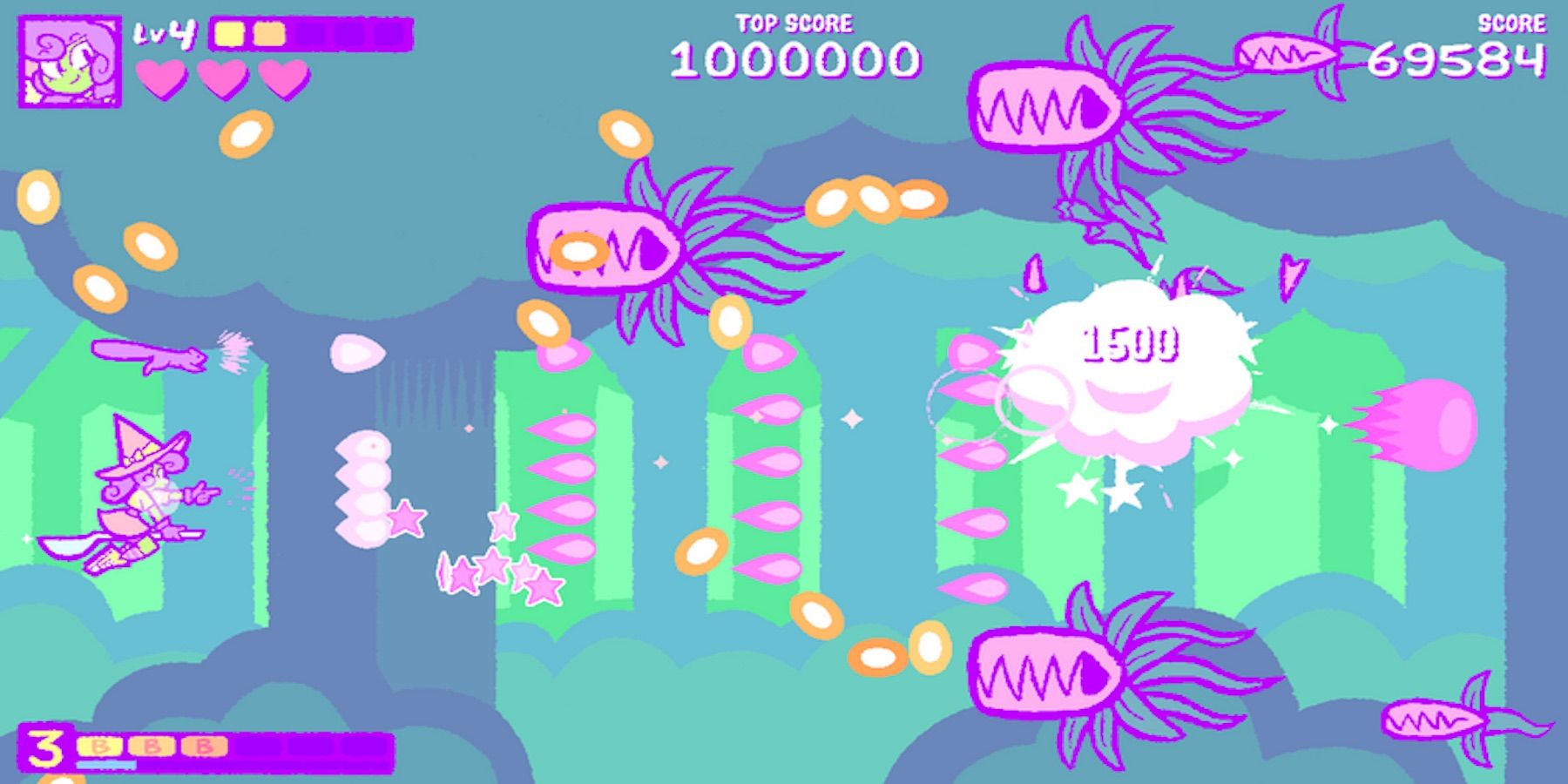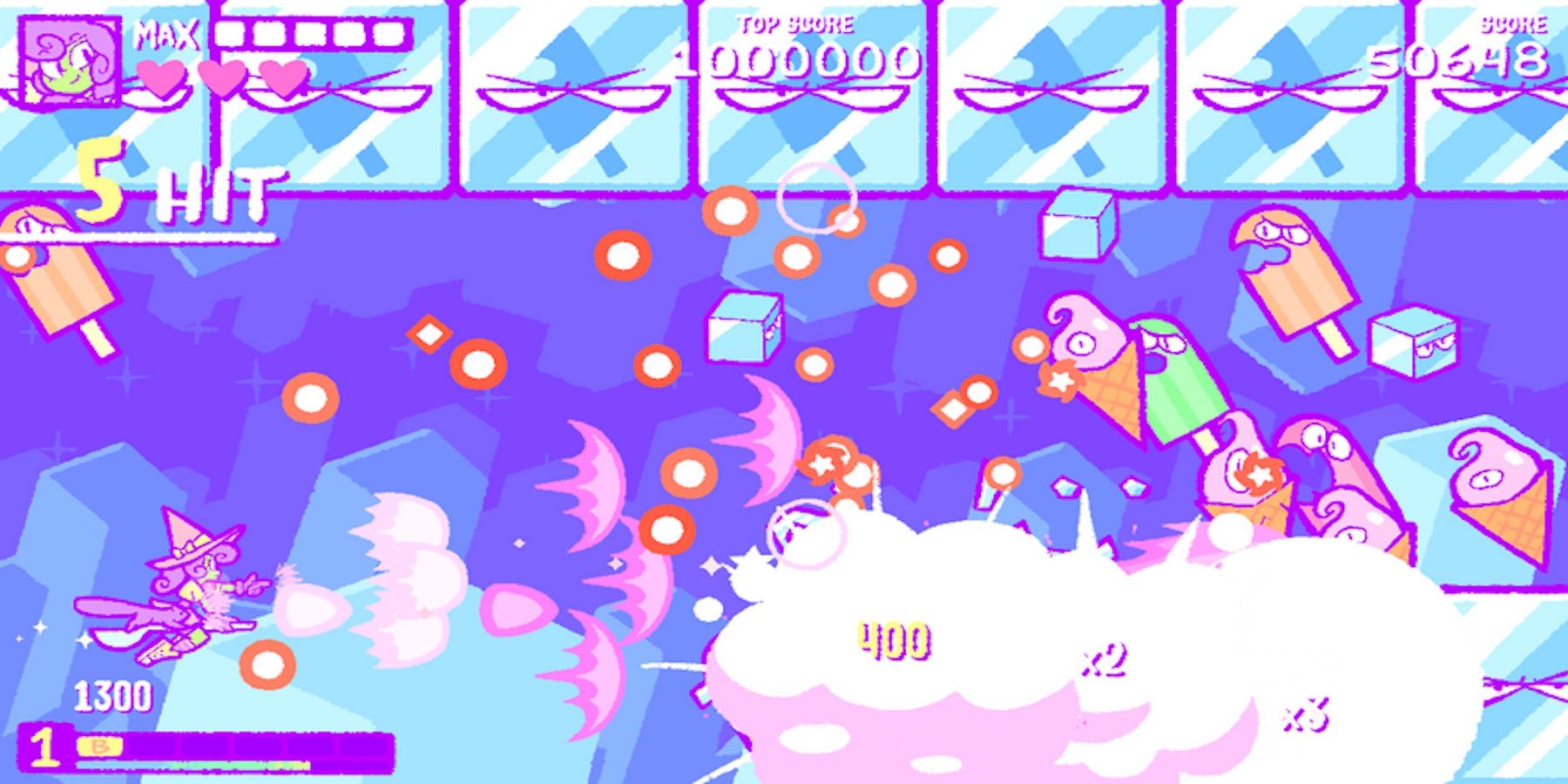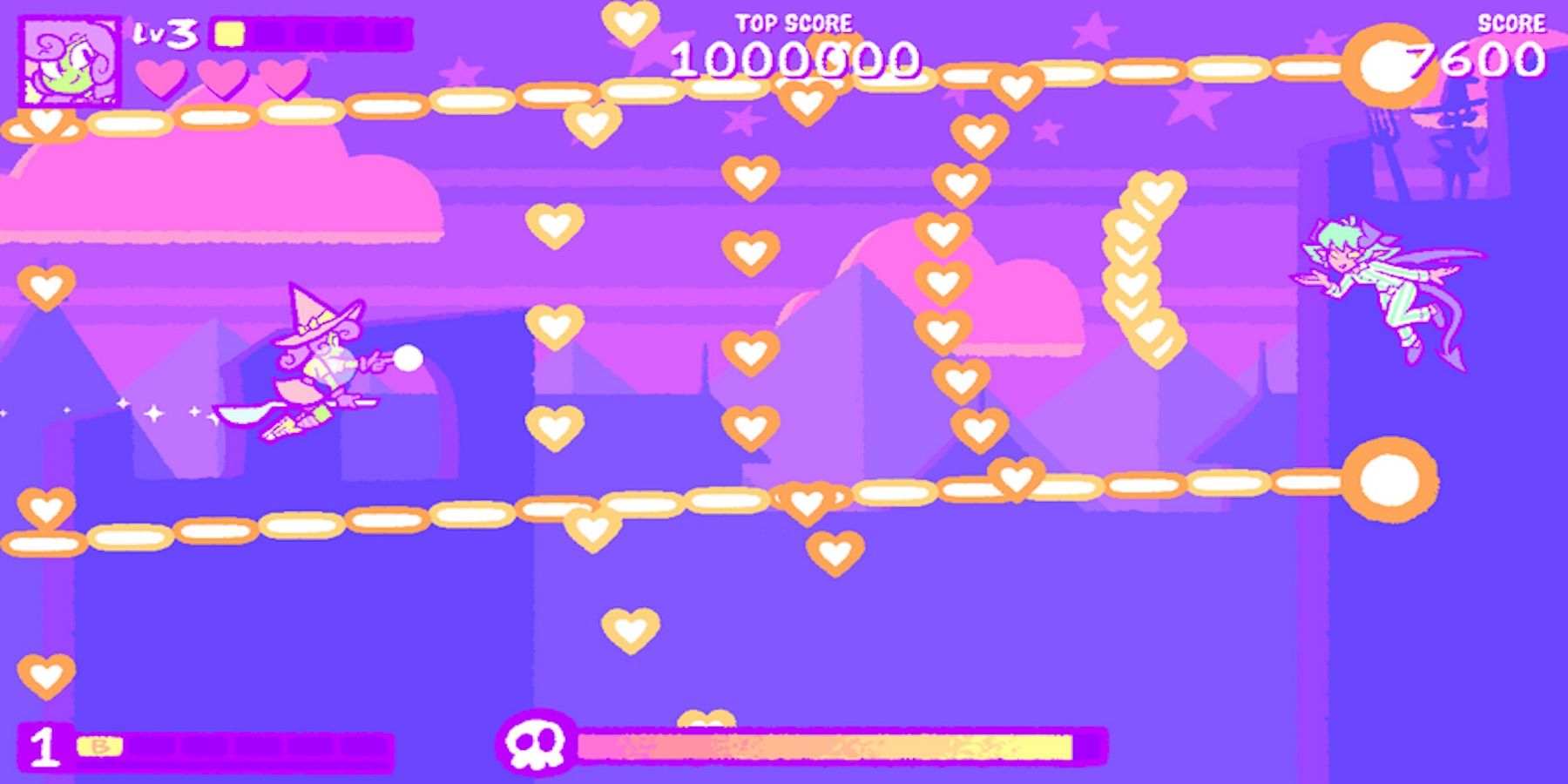For James, the solo developer behind new sidescrolling shoot ‘em up Hazelnut Hex, the shmup genre was a formative part of growing up. “All throughout high school I would force my friends to play these games with me,” he said. “I sucked a lot of hours into these silly shoot ‘em ups. I’m a big fan of them.”
A love of classic shmups, combined with an interest in programming and an animation background, led James - who asked to be referred to by first name only - to develop Hazelnut Hex. His game, which released in early October, aims to capture the best parts of the classic shoot ‘em up titles he played as a kid. Game ZXC spoke with James about how he achieved that balance as a solo dev, and how his audience has received the game so far. Interview has been edited for clarity and brevity.
Q: Would you mind introducing yourself and telling us a bit about Chunderfins as a studio?
A: I’m James, and it’s not much of a studio - it’s mostly just me. A number of years ago, I started the Chunderfins, which was just a little old cartoon band I drew online to give me a front-facing image for some music I was writing. Later on, I actually started performing the music with a real band and real people, not just cartoon characters.
I think I started doing the band stuff around 2014. Later, I started using my Chunderfins name for my art online, which made things a bit confusing.
Q: I noticed that when I first looked you up. Tell me a bit about that. Chunderfins started as a face for your music and art?
A: Yeah. I like drawing and animating, and I figured I would put a little something together to have an outlet for both of those things at the same time. I was also doing a little computer programming at my old job, so I had some background in that, too.
Q: Do you have an animation background?
A: That was something I started doing for fun, but I turned it into my day job a few years ago. I’ve worked for a few studios doing remote work - I worked a bit on the pilot season of the Adult Swim show Smiling Friends.
Q: When did you make the transition to video games from music and art? Have you been doing this part solo as well?
A: I did have some help with Hazelnut Hex. I didn’t do the voice acting or the cover art. I got some very talented friends to help me out with those.
I’ve always had an interest in making video games. It seems kind of intimidating, but shortly after quitting my old programming job, I said, ‘well, I’d still like to do some programming in my own time.’ Around 2018 or so, I started thinking about actually trying to make a game.
I think I started working on Hazelnut Hex around October of 2018. At the time, I thought to myself ‘how long could this possibly take? I’ll have this out in October of 2019.’ The game came out just a couple of days ago.
Q: Wow, yeah. I want to unpack that a bit more, but first, can you tell me a bit about Hazelnut Hex?
A: It’s a side-scrolling shoot ‘em up. You play as a little witch tasked with restoring breakfast, which has mysteriously vanished across the land. You have a little squirrel buddy who helps you out, too.
Q: I thought that was a funny premise. All of the bosses on each stage are just your hangry friends. Hazelnut seems to be very inspired by bullet-hell type games like Cuphead. Is that a fair comparison?
A: I love that you brought up Cuphead. I just did a retro games convention in Colorado a few days ago where I was demonstrating Hazelnut. Of all the people who played the game there, people under 30 would say it reminded them of Cuphead, and people over 30 would say it reminded them of Galaga.
I have played Cuphead, and I enjoyed it, but I’d say the specific influences were the old shoot ‘em ups I grew up playing. Some of my favorites were Darius Gaiden, Gunbird 2, and Castle Shikigami.
All throughout high school I would force my friends to play these games with me. I sucked a lot of hours into these silly shoot ‘em ups. I’m a big fan of them.
Q: The other thing that struck me about Hazelnut’s gameplay was that it felt a lot like playing on an old-school arcade cabinet. The game has these punchy lines of dialogue that get used pretty sparingly, and when you die you get one of those ‘insert coin to continue’ screens. Were arcade games much of an influence?
A: Yeah, extremely. Especially with the PC version, I tried to mimic the arcade emulators that I used to play my favorite shoot ‘em ups on. Some of those emulated games, like Taito Legends 2 on the Playstation 2, would literally force you to pretend to insert a coin before you play. That’s something I did. An instant continue, basically, where it’s like an arcade game but you have infinite quarters.
Q: Unlike an arcade game, though, I felt like the gameplay was pretty forgiving. When I died the first time I thought I was going to have to run the stage over again, but I was able to pick up from where I left off. Was that an intentional choice?
A: Absolutely. One of the games that I’ve probably played most in my life is Metal Slug X. I had that for the original Playstation. That was the first game I’ve played that had that gameplay style. If you died, you could just start back where you left off.
I had never played anything like that. The challenge of the game wasn’t ‘can you beat this level,’ it was more ‘how well can you beat this level.’ You’re not playing a level over and over again to beat it, you’re playing because you’re having a blast.
That’s what I was aiming for with Hazelnut. I don’t know if I was able to nail it, but that’s the experience I was shooting for.
Q: The aim was fun over a grueling challenge.
A: Exactly, right.
Q: Let’s talk difficulty. I wasn’t able to find a ‘hard’ mode right away. Does Hazelnut have a difficulty setting?
A: There actually is, in the menu. It’s called moderate difficulty, which was a bit of a joke for me. I used to play a lot of those old MS DOS first person shooters as a kid, which would always have these really hardcore sounding difficulty modes like ‘nightmare’ or ‘ultra violence’ or ‘I am death incarnate.’ I wanted to come up with a really lame-sounding hard mode for Hazelnut.
Q: How does ‘moderate’ mode functionally change the difficulty?
A: More bullets. That’s about it, though. I do think that makes the game quite a bit harder. There was originally just going to be one difficulty, but I added moderate mode because it got to the point where I was getting too good at the normal difficulty mode, and I wanted a fresh challenge.
Q: I want to talk a bit about the art style. Is all of Hazelnut’s art done by hand?
A: Yeah, I stuck with drawing on a digital pad. That’s how I do my animation work, and I haven’t had much experience with pixel art, so I just stuck with what I know. In retrospect, I might try a lower resolution next time, because there were a lot of times when I was programming the game where the high-res was just too many pixels to deal with.
Q: I can’t even imagine how long it must have taken to code and animate all that.
A: Yeah, when I started the game I’d never done any sort of game development outside of Flash games when I was a high schooler. I didn’t really know what the most time-consuming parts of the process were going to be. Animation definitely took longer than I thought at the beginning. A lesson for next time, I guess.
Animating each enemy, at least the simpler ones, probably took one day or so. Some of the more complicated ones took multiple days of work.
Q: We talked a little bit about the development process, but I’d love to hear a little more about that. What was it like putting Hazelnut together mostly by yourself? What were some of the biggest challenges you faced?
A: I was mostly working on the game in my spare time, while I was also working other jobs. A lot of the challenges, though, came from the fact that I’m one of the few people still using Windows 8. Now that I’m done with this project, I’m going to upgrade, I swear.
For me, I started developing Hazelnut mostly as a fun thing to do, something to keep me busy. I don’t think I really started going crazy working on it until the last few months, because I wanted to get the game finished by October 1 in time for the Colorado vintage game convention.
Q: You mentioned that before. How was the convention?
A: I’ve never done a convention before or had a table like the one I had. I’m not cut out for standing that many hours. It was a ton of fun, though, seeing people stop by and play my game, people of all ages giving it a try.
I didn’t know if an old-school shoot ‘em up could hold a kid’s attention for even two seconds, but there were a few kids under 10 that sat there for a half hour and played the whole damn thing.
Q: I like to ask indie devs about publishing. Did you ever consider working with a publisher?
A: I went with self-publishing because I didn’t really know anything about publishers. I didn’t research that too hard. I’m a massive fan of itch.io. It’s like Bandcamp, the site that I used to host my music, but for video games. I knew that format worked, so I just decided to use that.
I’ve also learned that it’s a very good idea to put games on Steam as well, because apparently the currency conversion on Steam is much friendlier to international players than itch.io.
Q: In terms of funding, did you self-finance? Was there any crowdfunding involved?
A: I made Hazelnut in my spare time with money I had from working other jobs. I think video game creation is more accessible now than it ever has been. I’m working on a computer that’s 10 years old. I’m not rolling in it. But, the PC development software I used was very affordable.
Q: I think that’s a good point. You don’t necessarily need a huge budget or a Kickstarter to make a game these days.
A: As long as you’re willing to stretch development over four years, I guess.
Q: Let’s talk a bit about reception. You talked a bit about the Colorado convention, but what other feedback have you received so far?
A: The feedback I got from playtesters was absolutely incredible. The game was probably impossible to anyone but me before playtesting. Testers told me things like ‘the bosses are straight up impossible.’
My goal for development was to make the game beatable in 10 lives by my best friend who I grew up playing shoot ‘em ups with. He was the final playtester.
When we finally got to him, he beat it in seven lives, and said ‘make it harder.’ I may have overcorrected. I’ve heard several people say it’s too hard, but I’ve also heard people say it’s too easy. Maybe I hit the sweet spot there.
I did get a lot of in-person feedback at the convention. One of the kids who played the game said ‘this game is fun, who invented it?’ I liked hearing that feedback.
The world-record holder for Gunstar Heroes was actually at the convention, and he said the game ‘wasn’t ass,’ which is probably one of the better reviews you can get from a speedrunner.
Q: When we were talking about the convention earlier, you said you were surprised kids had the attention span for a game like Hazelnut. I’ve been thinking about that. The game definitely feels simpler than a lot of more ambitious titles. Was simplicity part of the design? Do you think there’s an appetite for this type of game in the market?
A: Simplicity was definitely done on purpose. For one, it’s like a lot of the games I grew up with. Take Metal Slug X. It’s a game with one ending, zero branching paths, but I’ve played it a billion times. I also kept Hazelnut simple to keep the scope small. I actually wanted to finish making this game at some point.
As for an appetite, I don’t know. We’ll see. My main goal was to make a game that I would want to play. Hopefully, there are other folks out there who would want to play a game like this.
Q: Did it make you feel hopeful at all seeing kids at the convention interested Hazelnut?
A: Man, it made me feel proud. Kids still appreciate a good shoot ‘em up. One of the most heartbreaking things I heard at the convention was from a kid who said he liked my game because it never makes you stop to watch an ad. That was horrible.
Q: What’s next for Chunderfins? You’ve implied that you’re interested in making another game.
A: Yeah, absolutely. I’ve got a couple in the works. I want to make a way smaller project this time. I kind of want to do a visual novel, because that’s a genre I’m a big fan of.
My most insane take is that visual novels and shoot ‘em ups fall under the same category of game. They’re both straight to the action, but just different types of action. In a shoot ‘em up, you’re immediately doing the thing you’re there to do — shooting bad guys, dodging bullets. In a visual novel, you’re right in there reading and learning about the characters. There’s nothing in between, no busy work before you get to the story. They’re both types of games that are low-stress and good to kick back and play.
[END]
Hazelnut Hex is available now for PC and Switch.

